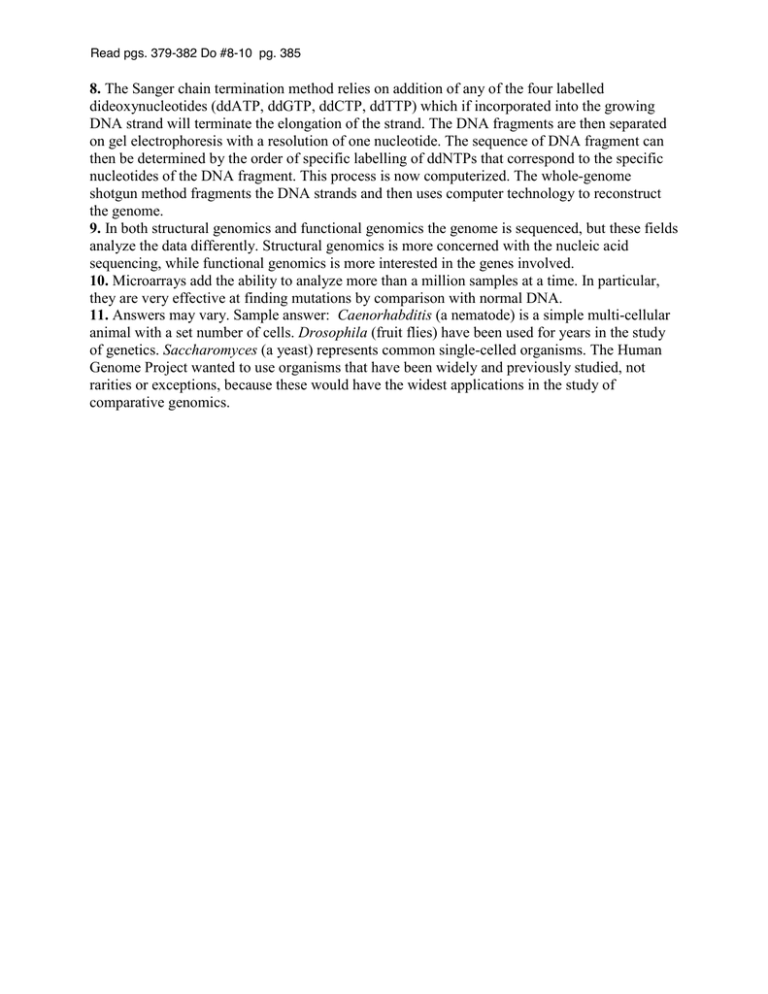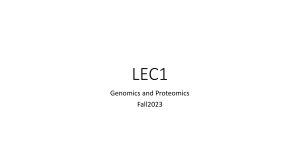8. The Sanger chain termination method relies on addition of any of
advertisement

Read pgs. 379-382 Do #8-10 pg. 385 8. The Sanger chain termination method relies on addition of any of the four labelled dideoxynucleotides (ddATP, ddGTP, ddCTP, ddTTP) which if incorporated into the growing DNA strand will terminate the elongation of the strand. The DNA fragments are then separated on gel electrophoresis with a resolution of one nucleotide. The sequence of DNA fragment can then be determined by the order of specific labelling of ddNTPs that correspond to the specific nucleotides of the DNA fragment. This process is now computerized. The whole-genome shotgun method fragments the DNA strands and then uses computer technology to reconstruct the genome. 9. In both structural genomics and functional genomics the genome is sequenced, but these fields analyze the data differently. Structural genomics is more concerned with the nucleic acid sequencing, while functional genomics is more interested in the genes involved. 10. Microarrays add the ability to analyze more than a million samples at a time. In particular, they are very effective at finding mutations by comparison with normal DNA. 11. Answers may vary. Sample answer: Caenorhabditis (a nematode) is a simple multi-cellular animal with a set number of cells. Drosophila (fruit flies) have been used for years in the study of genetics. Saccharomyces (a yeast) represents common single-celled organisms. The Human Genome Project wanted to use organisms that have been widely and previously studied, not rarities or exceptions, because these would have the widest applications in the study of comparative genomics. Copyright © 2012 Nelson Education Ltd. Chapter 8: Genetic Technologies 8.2-2

